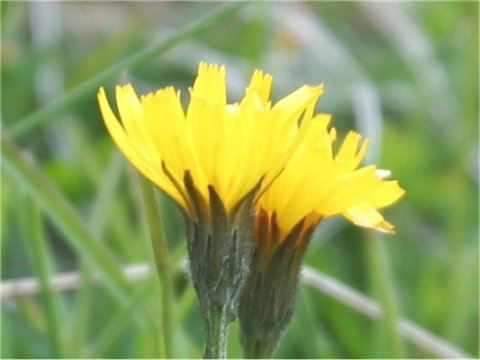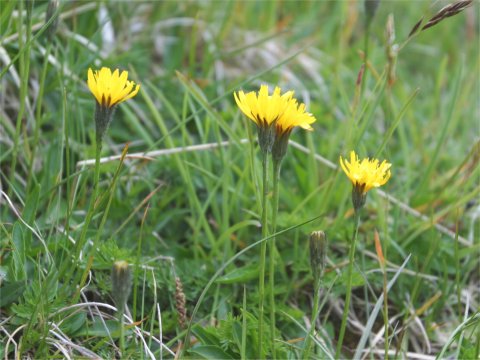 |




|

|
[bp©çkÉCÝÌRɪzµÄ¢Ü·Bnɶ¦A³ÍPO`QOZ`ÉÈèÜ·BtâsÍFÌש¢ÑÉííêĢܷBª¶tÍÈ~`©ç·È~`ÅASܽͪ èÜ·BV©çW²ëAÁÛ¢äÉïÜê½A©F¢ªÔð穹ܷBu±¤èñ½ñÛÛigÖöpjvÌßíÅ·B
|

|
LNÈiM^||®Ì½NÅAw¼Í Hieracium alpinumBp¼Í Alpine hawkweed B
|

|
The Alpine hawkweed (Hieracium alpinum) belongs to Asteraceae (the Aster family). It is a perennial herb that is distributed to the alpine zone from Europe to the coasts of the Arctic Ocean. It grows in grassland and can reach 10 to 20 cm in height. The leaves and stems are covered with fine white hair. The basal leaves are elliptic to oblong and have entire or serrations. From July to August, the yellow flower heads are wrapped in dark bracts. It is a closely related species of "Orange hawkweed" (Hieracium aurantiacum).
|

|
XCXE}CQunXxN´vÉÄA2002N0715úBeBiphoto by Jon Suehiroj
|



